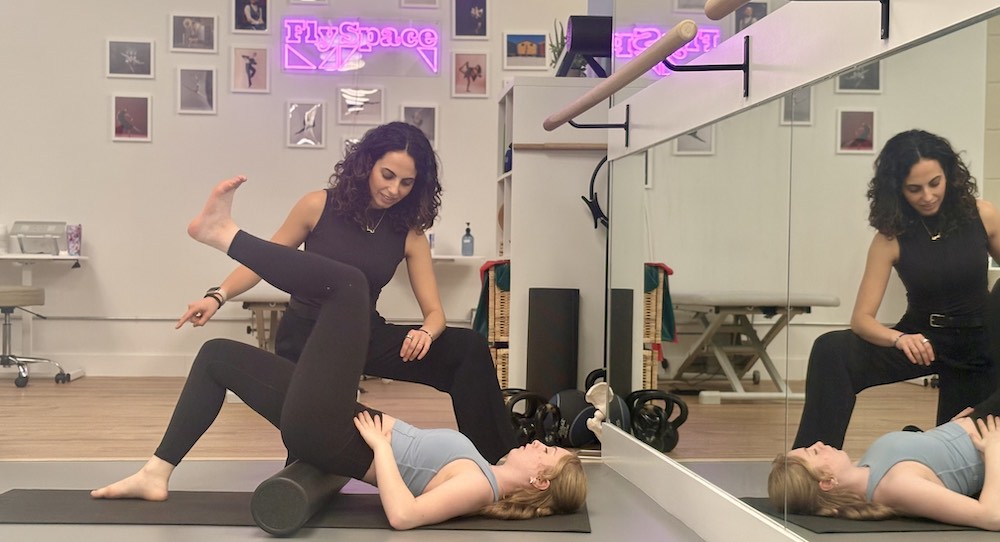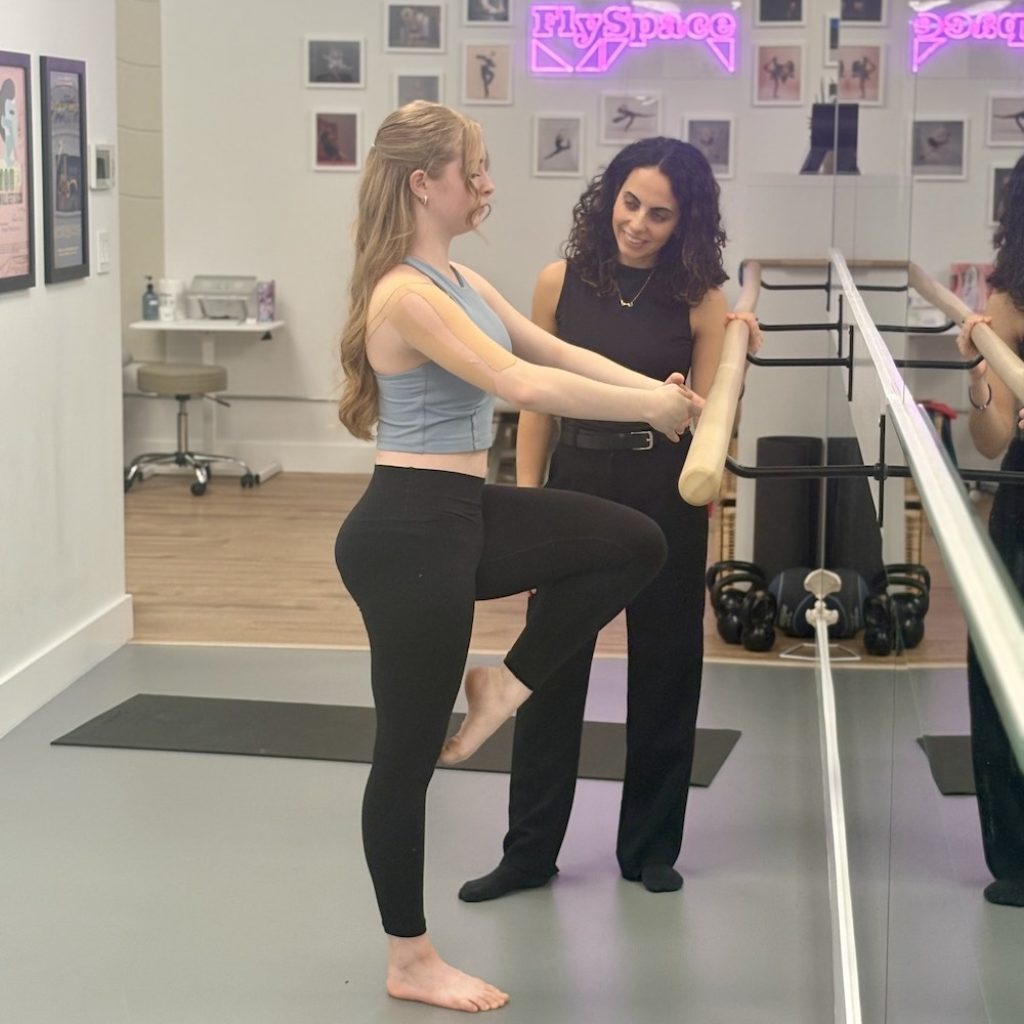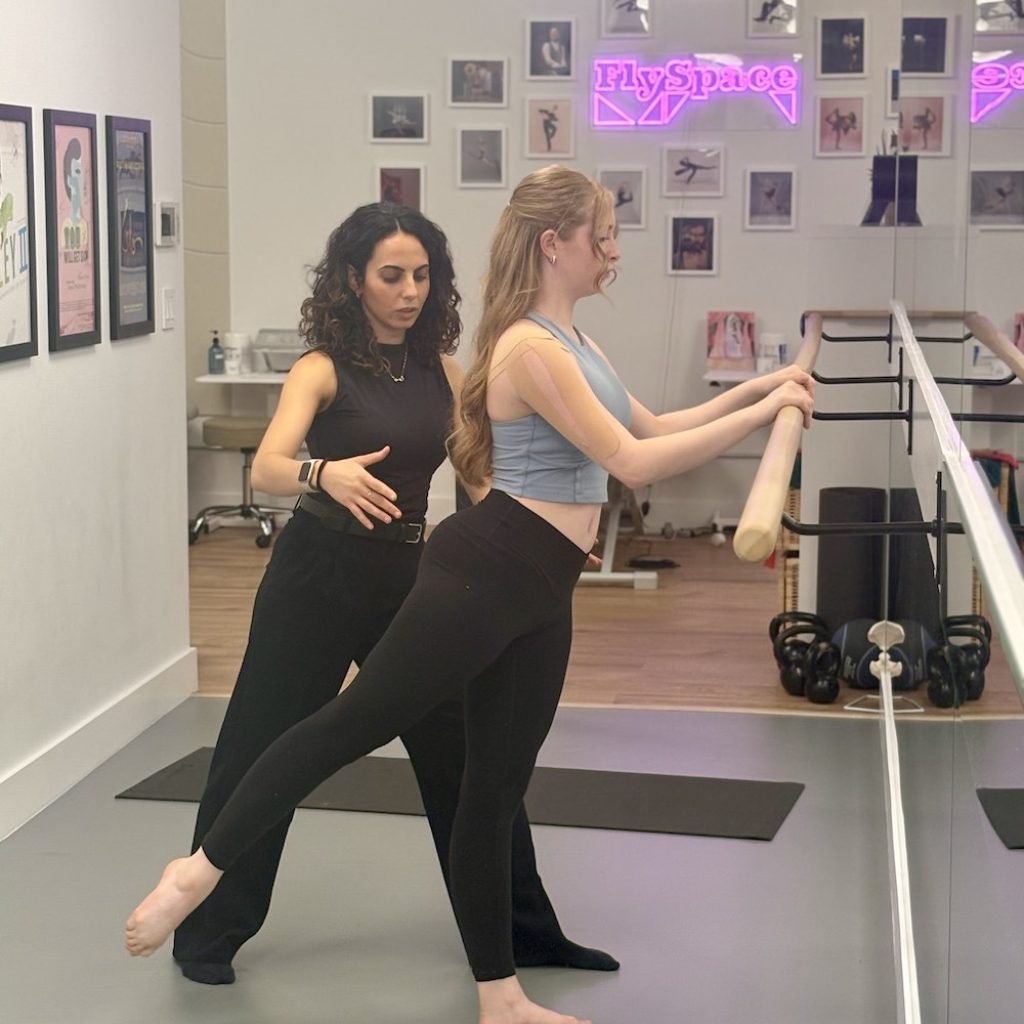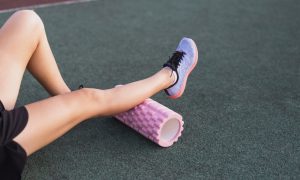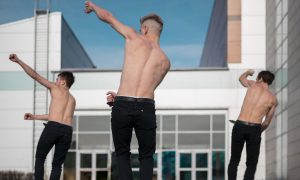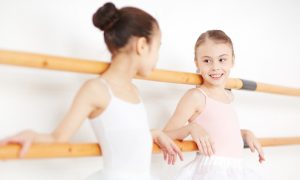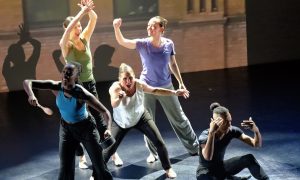Flexibility is an important requirement for dancers of all ages. Young dancers, in particular, need flexibility not only to perform but also to maintain overall health. Sometimes, younger students may lack flexibility in specific areas or experience overall tightness that hinders their dance technique. Modern lifestyles can exacerbate these challenges, with excessive sitting and time spent in front of screens contributing to stiffness. Well-informed, patient work is essential to help young dancers stretch safely, gain flexibility and move with suppleness.
Ami Kirollos, PT, DPT, CSCS, a physical therapist at FlySpace Physical Therapy in New York City, notes that occasional tightness is normal for children. However, frequent or chronic tightness in areas such as the hips, back or legs — especially in prepubescent children — warrants attention. Andrea Zujko, PT, DPT, OCS, COMT, clinical manager at Westside Dance Physical Therapy and adjunct faculty at NYU Tisch School of the Arts, emphasizes that age plays a key role. “There is a lot of growth that starts at about nine or 10 years old, right before the onset of puberty,” she explains.
Age and genetics play a role.
Kirollos advises investigating the root cause of chronic tightness. “Is there an injury? Weakness in a muscle or surrounding muscle group can lead to tightness or overwork in another part of the body,” she says, using the example of gluteal weakness resulting in overworked hamstrings. Activity levels should also be considered. “How much class are they taking, and at what intensity? Conversely, what are they doing outside of class?” Kirollos notes. Hours spent sitting with poor posture, such as in front of a laptop, can negatively impact flexibility.
Genetics also influence flexibility. Zujko explains, “Each muscle has approximately 50 percent fast and slow-twitch fibers. Collagen composition may vary in dancers with greater flexibility.” Body shape and limb length further contribute to differences in flexibility. During growth spurts, particularly in the legs, bones grow faster than muscles, potentially causing tightness. “You don’t want to overstress joints because you might damage them,” Zujko warns.
Kirollos breaks flexibility levels down by age. Ages 6-10: Children typically have flexible muscles and joints, making them naturally loose and adaptable. Ages 10-14: Growth spurts during puberty can lead to tightness, particularly in the hamstrings, hip flexors and calves.
The type of stretching makes a difference.
Flexibility training can benefit young students if approached correctly. “Stretching is important, but there has to be context,” Zujko says. “For instance, ballet requires significant flexibility, whereas tap does not.” She advocates for using props like blankets, yoga blocks and bolsters to support the body. However, she cautions against oversplits or forceful stretching.
Kirollos emphasizes that flexibility training is useful only when needed and stresses educating young dancers early about safe stretching techniques. “Many young children already have normal and full ranges of motion and may not need extensive stretching,” she says. “If introduced, I would prioritize dynamic stretching over static, end-range stretching.” Both experts warn against excessive or forceful stretching. “Causing excess strain on myofascial tissue is a big no-no,” Zujko remarks.
The type of stretching matters. “It makes sense to heat up the body and work through dynamic ranges of motion,” Zujko explains. “Passive stretching for extended periods is more appropriate for cooldowns, with stretches held for at least 20 to 30 seconds.” She also stresses the importance of joint alignment and cautions against torquing the hips, knees or back during stretches.
Yoga may be beneficial for young students. Kirollos says, “I can’t think of any contraindications to yoga. Perhaps the emphasis should be on attention, stability and breathing for kids instead of flexibility.” Zujko says yoga is fine, but the instruction has to be good and bodies should not be forced into hyperextenstion.
Rollers are found in every dance studio and are popular with adult dancers. For kids, Kirollos and Zujko agree rollers are not necessary. Zujko says that young student’s muscles are already more supple as opposed to an adult who may have problem areas that need work. Kirollos adds, “Unless they are dealing with a complaint or condition where it may be helpful – for example, a child with Sever’s disease.” She says if they are nearing a growth spurt, it could be beneficial to start slowly using a light foam roller.
What teachers need to know
Teachers play a crucial role in guiding students toward proper alignment and safe stretching practices. Gradual increases in intensity, depth and frequency, along with breathing exercises, are essential. Kirollos suggests introducing dynamic stretching concepts around ages 6-8 and static stretching between ages 8-10. “Very young dancers may benefit more from stability, coordination and strength training than from stretching alone,” she says. Both physical therapists recommend caution due to open growth plates, which remain until adolescence ends (ages 13-17 for girls and 15-19 for boys).
Zujko highlights the importance of clear communication, especially with young students who think concretely rather than abstractly. “Younger students can’t hold extreme positions; they need time to build strength,” she notes. Kirollos recommends teaching students to listen to their body and recognize safe stretching sensations. Pain after a stretch, difficulty breathing or sharp pain are signs to stop. She suggests using a “red light, green light” system to help children understand limits or a 1-10 scale to gauge stretching intensity, with a safe range being 4-6.
Beyond the dance studio
Physical activity should extend beyond dance. Running, jumping, skipping and playing all contribute to developing young minds and bodies. Time away from screens and extended sitting can help keep those muscles moving. A connection to the outdoors and nature are pluses at any age. “Flexibility takes time for the body to adapt to,” Zujko says, and she emphasizes the importance of patience — perhaps the hardest lesson for young dancers to learn.
By Mary Carpenter of Dance Informa.


